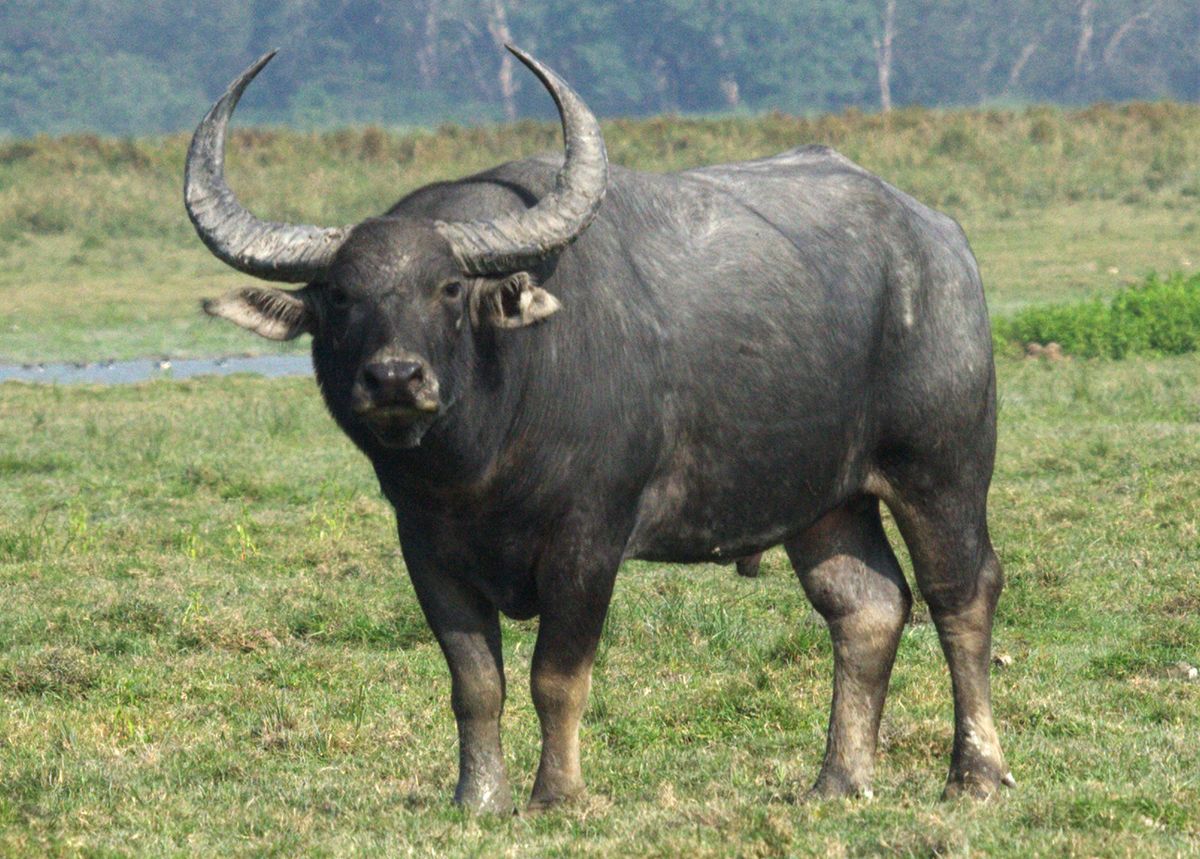madtechventures.com – The water buffalo (Bubalus bubalis) is a large bovine animal that has played a significant role in agriculture and human societies for thousands of years. Known for its strength, adaptability, and affinity for water, this species is a vital resource in many parts of the world, particularly in Asia and parts of Europe, South America, and Africa.
Two Main Types: River and Swamp
There are two main types of domestic water buffalo: the river buffalo and the swamp buffalo. These types differ in their physical characteristics, behavior, and primary uses.
- River Buffalo: Primarily found in India, Pakistan, and Egypt, river buffalo are known for their high milk production. They are typically larger and have longer, curled horns.
- Swamp Buffalo: Predominantly found in Southeast Asia, swamp buffalo are well-adapted to marshy environments and are primarily used for draft purposes, such as plowing fields and transporting goods. They are generally smaller than river buffalo and have crescent-shaped horns.
Physical Characteristics: Built for Strength and Water
Water buffalo are powerfully built animals with sturdy legs, large hooves, and a thick hide. Their most distinctive feature is their large, curved horns, which can vary in shape and size depending on the breed. They have a dark gray or black coat, which helps to protect them from the sun’s rays.
One of their key adaptations is their love for water. They are often seen wallowing in rivers, ponds, and mudholes, which helps them to regulate their body temperature and protect themselves from insects.
Domestication and Uses: A Multifaceted Resource
Water buffalo were domesticated thousands of years ago and have since become an integral part of agricultural systems in many parts of the world. They are used for a variety of purposes:
- Draft Power: Their strength and docility make them excellent draft animals, used for plowing fields, pulling carts, and other agricultural tasks.
- Milk Production: River buffalo are particularly valued for their milk, which is rich in fat and nutrients and is used to make various dairy products, such as mozzarella cheese.
- Meat Production: Buffalo meat, also known as “carabeef,” is a lean and flavorful meat source.
- Hide and Other Products: Their hides are used to make leather, and their horns and bones are used for various crafts and tools.
Ecological Role: Shaping Landscapes
In addition to their agricultural importance, water buffalo can also play a significant role in shaping landscapes and ecosystems. Their grazing habits can help to maintain grasslands and wetlands, and their wallowing behavior can create habitats for other species. In some areas, they are even used in conservation efforts to manage vegetation and restore degraded habitats.
Conservation Status: Wild Relatives Under Threat
While domestic water buffalo are abundant, their wild relatives, the wild water buffalo (Bubalus arnee), are endangered. Habitat loss, hunting, and interbreeding with domestic buffalo have significantly reduced their populations. Conservation efforts are underway to protect these wild populations and their habitats.
Conclusion: A Vital Partner in Human Society
The water buffalo is a versatile and valuable animal that has played a crucial role in human societies for centuries. From providing draft power and milk to shaping landscapes and contributing to conservation efforts, this species has a significant impact on both human livelihoods and the environment. By understanding and appreciating the diverse roles of the water buffalo, we can ensure its continued importance in the years to come.
